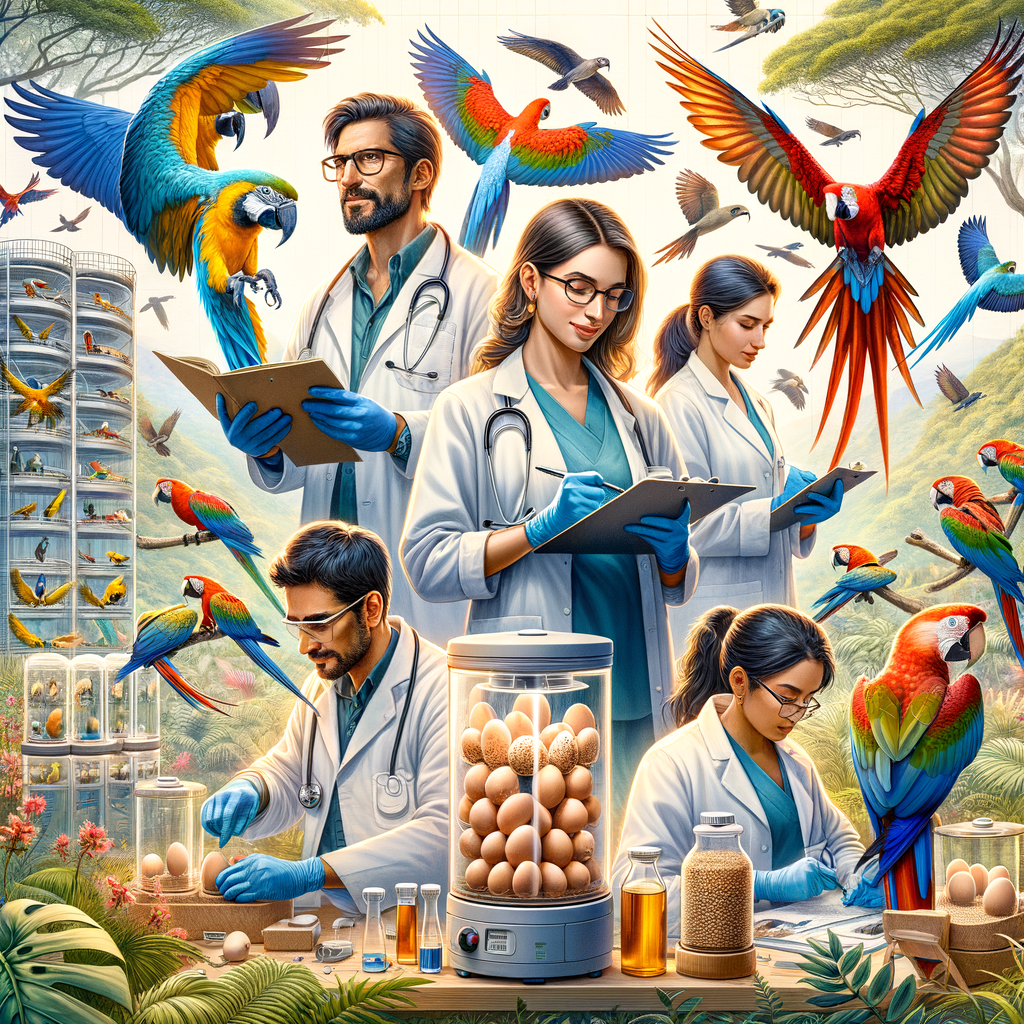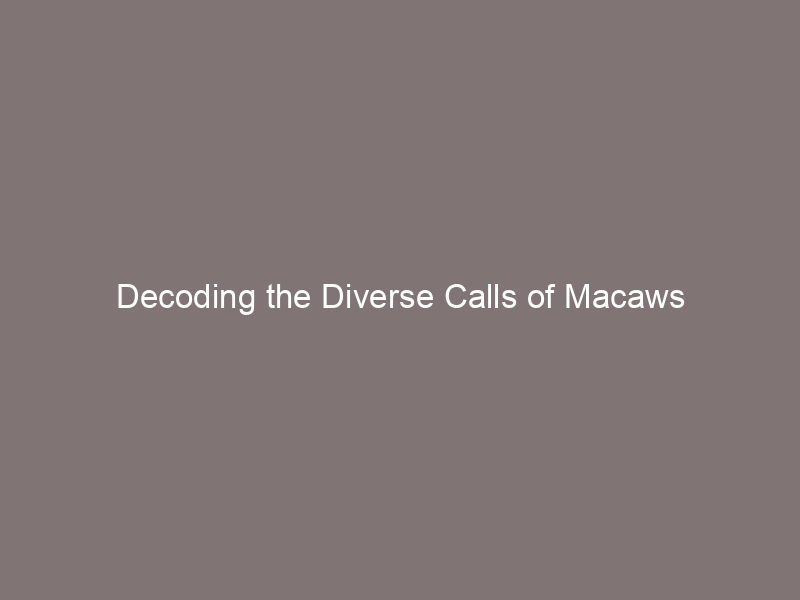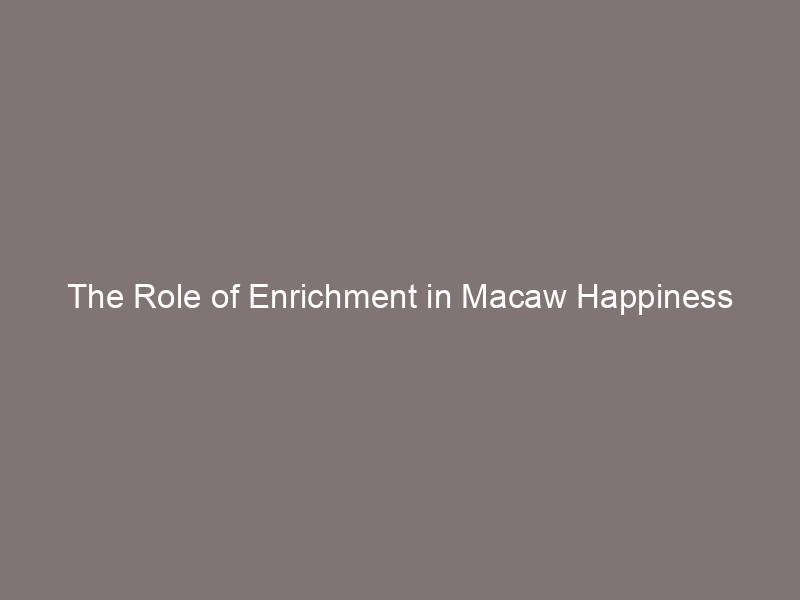
Introduction to Macaw Conservation
Macaws, with their vibrant colors and impressive wingspans, are among the most recognizable and beloved birds in the world. However, these beautiful creatures are facing significant challenges that threaten their survival. In this section, we will provide an overview of the Macaw species, discuss the current status of their populations, and explore the threats they face.
- Overview of Macaw Species
- Current Status of Macaw Populations
- Threats to Macaw Survival
Macaws are large, colorful parrots native to Central and South America. There are about 19 species of Macaws, including the Scarlet Macaw, Blue and Yellow Macaw, and the Hyacinth Macaw. Each species has its unique characteristics, but all Macaws share some common traits. They are known for their bright colors, long lifespans, and strong, curved beaks.
Unfortunately, many Macaw species are facing a decline in their populations. According to the International Union for Conservation of Nature (IUCN), several species, including the Blue-throated Macaw and the Red-fronted Macaw, are critically endangered. This means they are at an extremely high risk of extinction in the wild. The primary reasons for this decline are habitat loss and illegal pet trade.
Macaws face several threats that are contributing to their declining populations. Habitat loss due to deforestation is a significant issue, as Macaws rely on large, old trees for nesting. Additionally, illegal pet trade poses a serious threat. Macaws are often captured and sold as pets due to their beautiful plumage and ability to mimic human speech. This not only reduces their wild populations but also often results in poor living conditions for the birds.
In the following sections, we will delve deeper into the role of captive breeding in Macaw conservation, discuss various breeding programs, and explore future strategies for their conservation. By understanding the challenges these magnificent birds face, we can all play a part in their survival.
The Role of Captive Breeding in Macaw Conservation
As we delve into the world of Macaw conservation, one method stands out as particularly effective – captive breeding. Let’s take a closer look at what captive breeding entails, its history, and its pros and cons.
Understanding Captive Breeding
Captive breeding is a technique used by conservationists to help endangered species like the Macaw. But what exactly is it? How did it start? And what are its benefits and drawbacks?
- Definition of Captive Breeding
- History of Captive Breeding
- Benefits and Drawbacks of Captive Breeding
Captive breeding, as the name suggests, involves breeding animals in controlled environments like zoos or wildlife reserves. The main goal is to increase the population of endangered species and eventually reintroduce them into their natural habitats.
The practice of captive breeding dates back to the 1960s. It was initially used to save the Peregrine Falcon and the California Condor from extinction. Today, it’s a common practice used worldwide to conserve numerous endangered species, including our colorful friends, the Macaws.
Captive breeding has its share of benefits and drawbacks. On the positive side, it helps increase the population of endangered species, preserves genetic diversity, and aids in the reintroduction of species into the wild. However, it also has some drawbacks. These include the high cost of maintaining breeding facilities and the risk of animals losing their natural behaviors.
Understanding captive breeding is crucial in appreciating its role in Macaw conservation. As we move forward, we’ll explore how this technique is applied specifically to Macaws and the impact it has on their survival.
How Captive Breeding Contributes to Macaw Preservation
Captive breeding plays a crucial role in the preservation of Macaws. Let’s explore how it helps in increasing population numbers, preserving genetic diversity, and reintroducing Macaws into the wild.
- Increasing Population Numbers
Captive breeding is a powerful tool in the fight against the extinction of Macaws. By breeding these birds in a controlled environment, we can increase their population numbers significantly. For instance, the Spix’s Macaw, once considered extinct in the wild, now has a population of over 160 birds thanks to captive breeding programs.
- Preserving Genetic Diversity
Genetic diversity is the key to a species’ survival. It allows a species to adapt to changes in their environment and resist diseases. Captive breeding programs carefully pair Macaws to ensure a wide range of genetic material is preserved. This helps to maintain the health and vitality of the species.
- Reintroduction of Macaws into the Wild
One of the most exciting aspects of captive breeding is the potential for reintroduction into the wild. Once a stable population is established in captivity, these birds can be carefully reintroduced into their natural habitats. A successful example of this is the Scarlet Macaw, which has been reintroduced in areas of Costa Rica where it had previously disappeared.
| Macaw Species | Population Increase Due to Captive Breeding | Reintroduction Success |
|---|---|---|
| Spix’s Macaw | From 0 to over 160 | Planned for the future |
| Scarlet Macaw | Significant increase | Successful in Costa Rica |
In conclusion, captive breeding is an essential tool in Macaw conservation. It aids in increasing population numbers, preserving genetic diversity, and reintroducing these beautiful birds into the wild, thus ensuring their survival for future generations.
Captive Breeding Programs for Macaws
One of the most effective strategies in conserving the beautiful and vibrant macaws is through captive breeding programs. These initiatives aim to increase the population of these birds in a controlled environment, ensuring their survival and eventual reintroduction to the wild.
Case Study: The Ara Project
One of the most notable captive breeding programs for macaws is The Ara Project. Let’s delve deeper into this initiative, its successes, challenges, and key takeaways.
- Overview of The Ara Project
- Successes and Challenges
- Key Takeaways
The Ara Project is a dedicated conservation initiative that focuses on the breeding and reintroduction of two native macaw species: the Great Green Macaw and the Scarlet Macaw. The project aims to increase their numbers and ensure their survival in the wild.
The Ara Project has seen significant success, with a notable increase in the population of both species. However, it has also faced challenges, such as habitat loss and illegal pet trade, which threaten the survival of these birds even in controlled environments.
The Ara Project has demonstrated that captive breeding programs can play a crucial role in macaw conservation. It has shown that with dedication, collaboration, and the right strategies, we can help these beautiful birds thrive once more in their natural habitats.
In conclusion, captive breeding programs like The Ara Project are vital in the fight to conserve macaws. They provide a safe environment for these birds to breed and grow, increasing their numbers and ensuring their survival. Despite the challenges, the successes of these initiatives show that we can make a difference in protecting these vibrant creatures and their habitats.
Other Notable Captive Breeding Programs
-
Program A: The Macaw Recovery Network
The Macaw Recovery Network is a commendable captive breeding program that aims to protect and restore endangered macaw species. They work tirelessly to breed and reintroduce these beautiful birds into their natural habitats. Their efforts have resulted in the successful release of numerous macaws back into the wild, contributing significantly to the conservation of these species.
-
Program B: The Tambopata Macaw Project
The Tambopata Macaw Project in Peru is another noteworthy program. This project focuses on the research and conservation of macaws within the Tambopata region. Their work includes studying the natural behavior of macaws, their breeding patterns, and their interaction with the environment. The insights gained from this research are invaluable in developing effective conservation strategies.
-
Program C: The World Parrot Trust
The World Parrot Trust is a global organization that runs several captive breeding programs for various parrot species, including macaws. They work towards the protection, conservation, and welfare of parrots. Their captive breeding programs have been successful in increasing the population of several endangered macaw species, thereby playing a crucial role in macaw conservation.
| Program | Focus | Successes |
|---|---|---|
| The Macaw Recovery Network | Protection and restoration of endangered macaw species | Successful release of numerous macaws back into the wild |
| The Tambopata Macaw Project | Research and conservation of macaws within the Tambopata region | Valuable insights into macaw behavior, breeding patterns, and environmental interaction |
| The World Parrot Trust | Protection, conservation, and welfare of parrots, including macaws | Successful in increasing the population of several endangered macaw species |
Macaw Breeding Techniques
When it comes to the conservation of Macaws, understanding their breeding techniques is crucial. These beautiful birds have a unique process that ensures the survival of their species. Let’s delve into the fascinating world of Macaw breeding.
- Pairing and mating
- Nest building and egg laying
- Chick rearing and fledging
Macaws, like many bird species, form strong bonds with their partners. They often choose a mate for life, a process known as pairing. This pairing process usually happens when the birds reach maturity, which is typically around 3 to 4 years old. Once a pair is formed, the two birds engage in courtship behaviors such as preening each other, sharing food, and flying together. Mating usually occurs during the breeding season, which can vary depending on the species and their habitat.
After mating, the next step in the Macaw breeding process is nest building. Macaws prefer to nest in high places, often choosing hollows in tall trees. The female is primarily responsible for preparing the nest, although the male may assist. Once the nest is ready, the female lays her eggs. A typical Macaw clutch contains 2 to 3 eggs, which the female incubates for about 24 to 28 days.
The final stage in the Macaw breeding process is chick rearing and fledging. Once the eggs hatch, both parents take part in feeding and caring for the chicks. The chicks remain in the nest for about 3 months, during which time they learn to fly, a process known as fledging. After fledging, the young Macaws stay with their parents for a few more months before setting off on their own.
Understanding these breeding techniques is essential for those involved in Macaw conservation. By replicating these conditions in captivity, we can help ensure the survival of these magnificent birds.
The Impact of Captive Breeding on Macaw Conservation
Captive breeding plays a significant role in the conservation of Macaws. It has both positive and negative impacts. In this section, we will focus on the positive impacts of captive breeding on Macaw conservation.
Positive Impacts
There are several benefits of captive breeding for Macaw conservation. Let’s take a closer look at three key positive impacts: population recovery, increased genetic diversity, and education and public awareness.
- Population Recovery
- Increased Genetic Diversity
- Education and Public Awareness
Captive breeding helps in the recovery of the Macaw population. Many species of Macaws are endangered due to habitat loss and illegal pet trade. Captive breeding programs provide a safe environment for these birds to breed and increase their numbers. For instance, the Spix’s Macaw, once considered extinct in the wild, has seen a resurgence due to successful captive breeding programs.
Another positive impact of captive breeding is the increase in genetic diversity. In the wild, the population of Macaws is often isolated, leading to inbreeding and a decrease in genetic diversity. Captive breeding programs can carefully manage the breeding process to ensure a wide range of genetic material, leading to healthier and more resilient populations.
Captive breeding programs also play a crucial role in education and public awareness. They provide an opportunity for the public to learn about Macaws and the threats they face. This awareness can lead to increased support for conservation efforts and stricter laws against illegal pet trade. For example, many zoos and conservation centers offer educational programs about Macaws and their conservation.
In conclusion, captive breeding has a significant positive impact on Macaw conservation. It aids in population recovery, increases genetic diversity, and promotes education and public awareness. However, it’s important to remember that captive breeding is just one tool in the conservation toolbox. It should be used in conjunction with habitat protection and other conservation strategies to ensure the survival of these magnificent birds.
Negative Impacts
While captive breeding programs for macaws have many benefits, they also come with a few downsides. Let’s explore some of these negative impacts.
- Potential for Disease Transmission
- Difficulties in Reintroduction
- Dependency on Human Intervention
When macaws are kept in close quarters, there’s a higher chance for diseases to spread. Just like how a cold can quickly pass through a classroom, diseases can spread fast among macaws in captive breeding programs. For example, the deadly Proventricular Dilatation Disease (PDD) can spread rapidly in a captive environment, posing a serious threat to the macaw population.
Reintroducing captive-bred macaws back into the wild isn’t always easy. These birds might not have the necessary survival skills, like finding food or avoiding predators, as they would have learned these from their parents in the wild. A case study in Costa Rica showed that only 50% of reintroduced macaws survived their first year in the wild.
Macaws bred in captivity often become dependent on humans for food and protection. This dependency can make it harder for them to survive on their own in the wild. In fact, a study found that captive-bred macaws were three times more likely to approach humans than their wild counterparts, which can put them at risk.
In conclusion, while captive breeding programs play a crucial role in macaw conservation, it’s important to address these negative impacts to ensure the long-term survival of these beautiful birds in the wild.
Future Conservation Strategies for Macaws
As we look to the future, there are several strategies that can be employed to ensure the survival and thriving of macaws. These strategies are not only aimed at increasing the population of these beautiful birds but also at creating a sustainable environment for them. Let’s explore these strategies in detail.
- Continued Captive Breeding Efforts
- Habitat Protection and Restoration
- Public Education and Awareness Campaigns
One of the most effective ways to increase the population of macaws is through captive breeding. This involves breeding macaws in a controlled environment, away from the threats they face in the wild. Captive breeding has been successful in the past, with several species of macaws being saved from the brink of extinction. For instance, the Spix’s Macaw, once considered extinct in the wild, has seen a resurgence thanks to captive breeding efforts. Moving forward, it’s crucial that we continue and expand these efforts to protect more species.
Macaws, like all wildlife, depend on their natural habitat for survival. Unfortunately, many of their habitats are being destroyed due to deforestation and urban development. To combat this, it’s essential that we protect existing habitats and restore those that have been damaged. This can be achieved through legislation, sustainable farming practices, and reforestation initiatives. By preserving and restoring these habitats, we can provide macaws with the environment they need to thrive.
Lastly, public education and awareness are key to macaw conservation. Many people are unaware of the threats that macaws face and the steps they can take to help. By launching education and awareness campaigns, we can inform the public about the importance of macaw conservation and inspire them to take action. This could involve teaching people about the dangers of the illegal pet trade, encouraging them to support conservation efforts, or even showing them how to create bird-friendly gardens. With increased awareness, we can create a society that values and protects macaws.
In conclusion, the future of macaw conservation lies in continued captive breeding efforts, habitat protection and restoration, and public education and awareness campaigns. By implementing these strategies, we can ensure a bright future for these magnificent birds.






